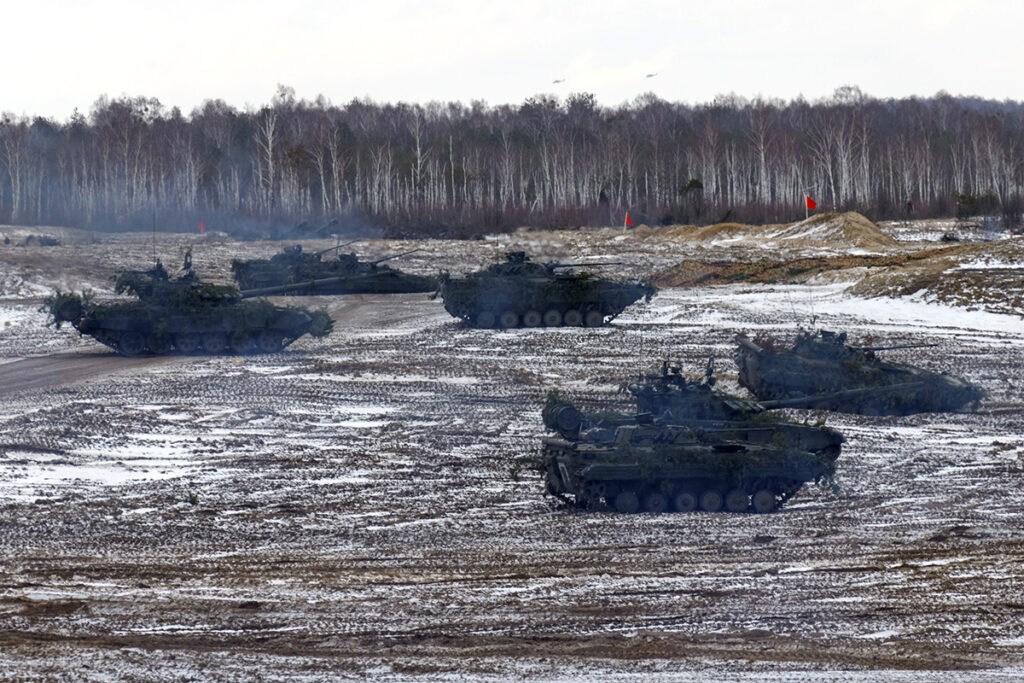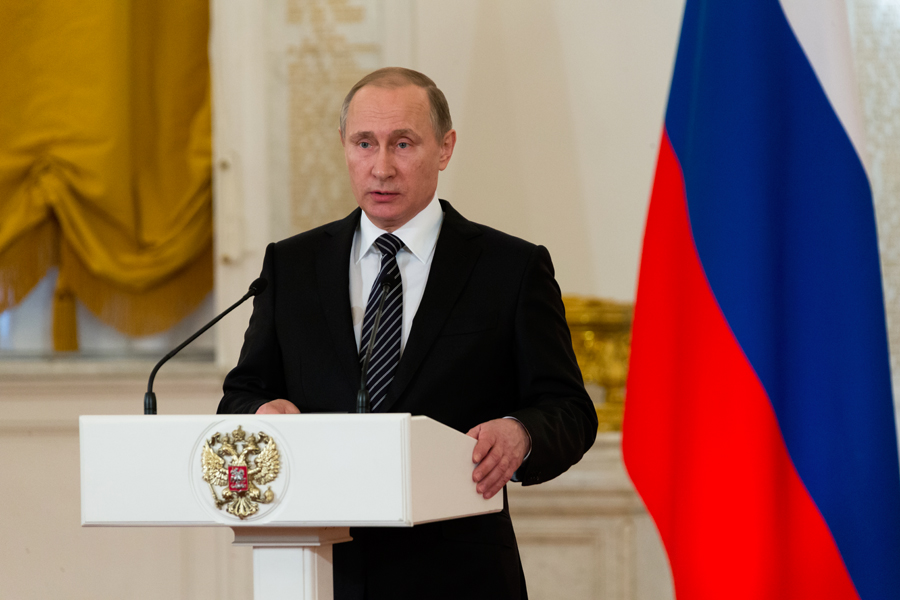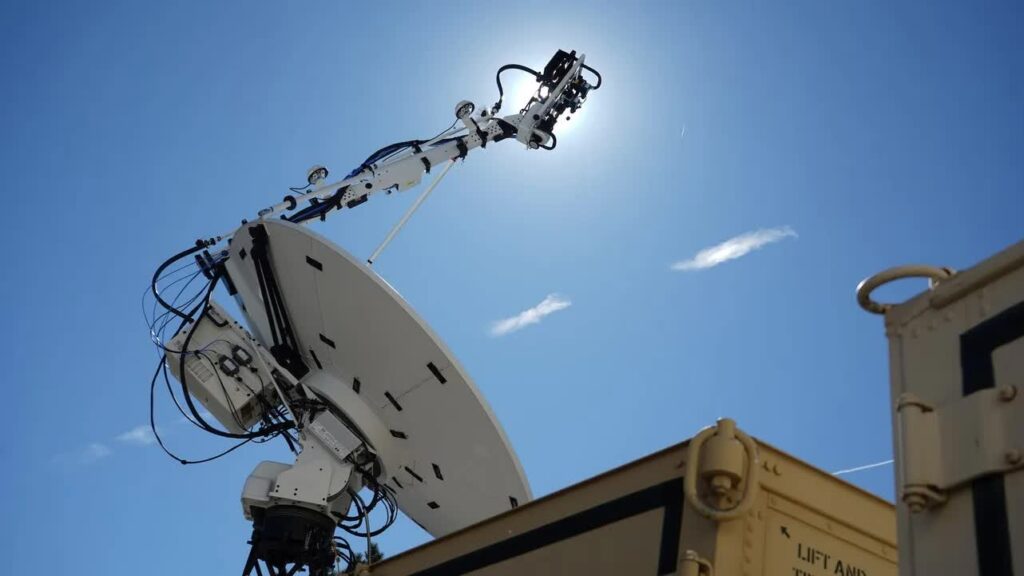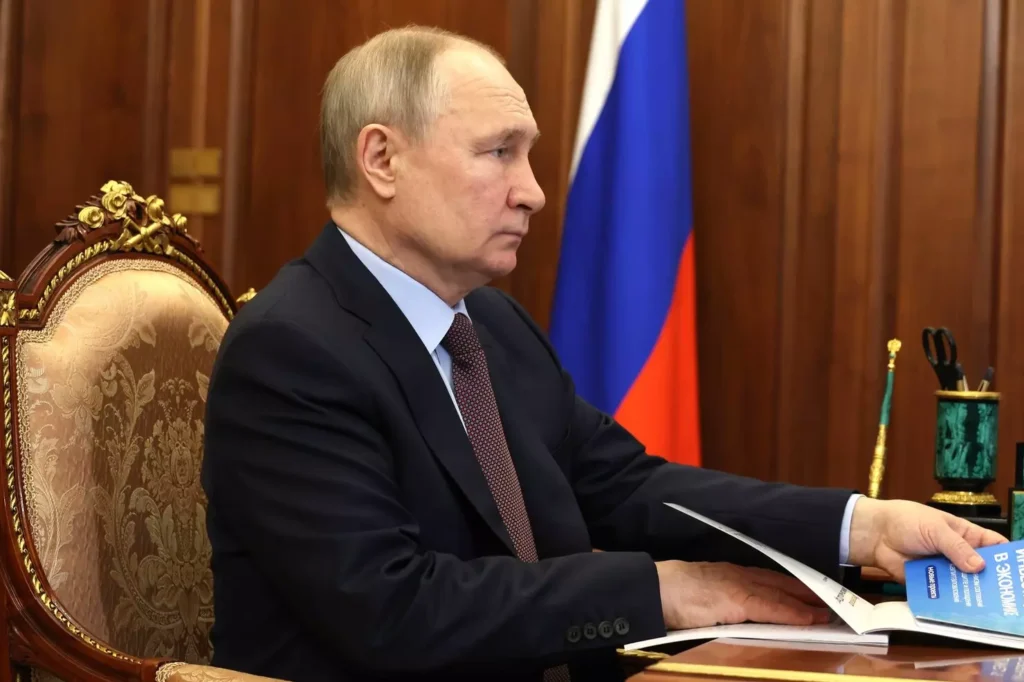Optimism about Russian withdrawal from Ukraine should remain cautious
- By Tory Rich
Share This Article

After over two months of international tension caused by Russian troops massing on Ukraine’s borders, the first sign of a potential de-escalation and diplomatic resolution in the crisis may have just come on Tuesday morning. The Russian Defence Ministry announced that it would be pulling back some of its 100,000 troops from Ukraine’s eastern border and returning them to garrison. Thus far, however, there’s been little sign of Russian withdrawal.
Russia also stated that its large military exercises in Belarus, to Ukraine’s north, will continue. The exercises, involving another 30,000 Russian troops, began last Thursday. The Russian Defence Ministry said those troops, however, will return to garrison when the exercises conclude Feb. 20.

Related: 5-Minute Summary: What’s going on in Ukraine?
Western officials remain wary of Russian intentions following the announcement. It is unclear at this time how many troops and weapons, if any, have actually been moved from forward areas in the east, and as long as heavily-armed Russian troops remain positioned in Belarus, as close as 100 miles from the Ukrainian capital of Kyiv, the uneasiness is unlikely to subside.
“This gives the grounds for cautious optimism, but so far we have not seen any sign of de-escalation on the ground,” NATO Secretary General Jens Stoltenberg said in a press briefing Tuesday.
Stoltenberg is far from alone in his skepticism. Just 24 hours after President Volodymyr Zelensky appeared to warn his country that Russia would attack on Feb. 16 (which he later walked back as a mere response to media speculation), the Ukrainians are far from ready to ignore Russia’s duplicitous track record.

Related: Russia says it won’t start a war in Ukraine as tensions rise
“We in Ukraine have a rule: we don’t believe what we hear, we believe what we see,” Ukrainian Minister of Foreign Affairs Dmytro Kuleba said via his Twitter account. “If a real withdrawal follows these statements, we will believe in the beginning of a real de-escalation.”
Julianne Smith, President Joe Biden’s ambassador to NATO, echoed the suspicion of Russia’s apparent desire to seek the diplomatic route, citing previous similar behavior from the Kremlin two months ago.
“We’ll have to verify that and take a look,” she told reporters Tuesday. “You may remember, in late December, there were some similar claims that came out of Moscow that they were de-escalating and in fact, facts on the ground did not support that claim.”

Of course, Moscow’s credibility in these matters has long been tarnished, and it should be noted that State Duma (Russian Parliament) voted to formally ask President Vladimir Putin to recognize Donetsk and Luhansk, the two Russian-backed breakaway states in Ukraine. This would be a “blatant violation of Ukraine’s territorial integrity and sovereignty once again…” as Stoltenberg put it.
After all of Putin’s spin and rhetoric during the unrest in Crimea in 2014, and the subsequent invasion and annexation by Russia, it appears he may be following a very similar playbook now. One could speculate endlessly on what Putin’s end game is, but the picture seems to be coming into focus.
Western Intelligence supports the possibility that Russia’s withdrawal announcement is little more than a ruse, as recent construction of field hospitals with fresh blood supplies only adds to the list of recent Russian additions near Ukraine.
Developments like this, combined with Putin’s intentions being kept perpetually murky and close to the vest, can be very unsettling. Russia’s past dealings with former Soviet states, and Ukraine in particular, leave plenty of reason to remain on guard and prepared for military action. However, if (and only if) Russia backs their words with the substantial action of pulling troops back from the border, it leaves room for optimism that wider-spread violence in Eastern Europe has been avoided for the time being.
Read more from Sandboxx News:
- Update from the war zone in Ukraine as fighting escalates
- Winter warfare: Ukraine a case study for America’s arctic pivot
- Which 10 US bases are on alert for Ukraine deployment?
- Russia’s high profile weapons are all smoke and mirrors
- Why Russia’s military isn’t quite as powerful as it seems
Feature image: Russian Ministry of Defence
Related Posts
Sandboxx News Merch
-

‘Sandboxx News’ Dad Hat
$27.00 Select options This product has multiple variants. The options may be chosen on the product page -

‘AirPower’ Golf Rope Hat
$31.00 Select options This product has multiple variants. The options may be chosen on the product page -

‘Kinetic Diplomacy’ Bumper Sticker (White)
$8.00 Add to cart
Tory Rich
Tory Rich is a Marine veteran, and now coaches football and wrestling, so he spends most of his time lecturing younger people about “back in the old days.” Fortunately, there aren’t a lot of kids to tell to get off his lawn deep in the woods of Vermont. Since he got out of the Marines in 2011, Tory got a bachelor’s degree in Kinesiology from UNLV. While he lived in Las Vegas he dabbled in powerlifting and learned just enough about mixed martial arts to get his butt kicked.
Related to: Breaking News, Military Affairs

What it’s like to visit Korea’s Demilitarized Zone

Space Force to deploy new jammers to yell at enemy satellites

Ukraine peace negotiations don’t look promising

Unit 684 – The South Korean suicide squad with the tragic history
Sandboxx News
-

‘Sandboxx News’ Trucker Cap
$27.00 Select options This product has multiple variants. The options may be chosen on the product page -

‘AirPower’ Classic Hoodie
$46.00 – $48.00 Select options This product has multiple variants. The options may be chosen on the product page -

‘AirPower’ Golf Rope Hat
$31.00 Select options This product has multiple variants. The options may be chosen on the product page -

‘Sandboxx News’ Dad Hat
$27.00 Select options This product has multiple variants. The options may be chosen on the product page
